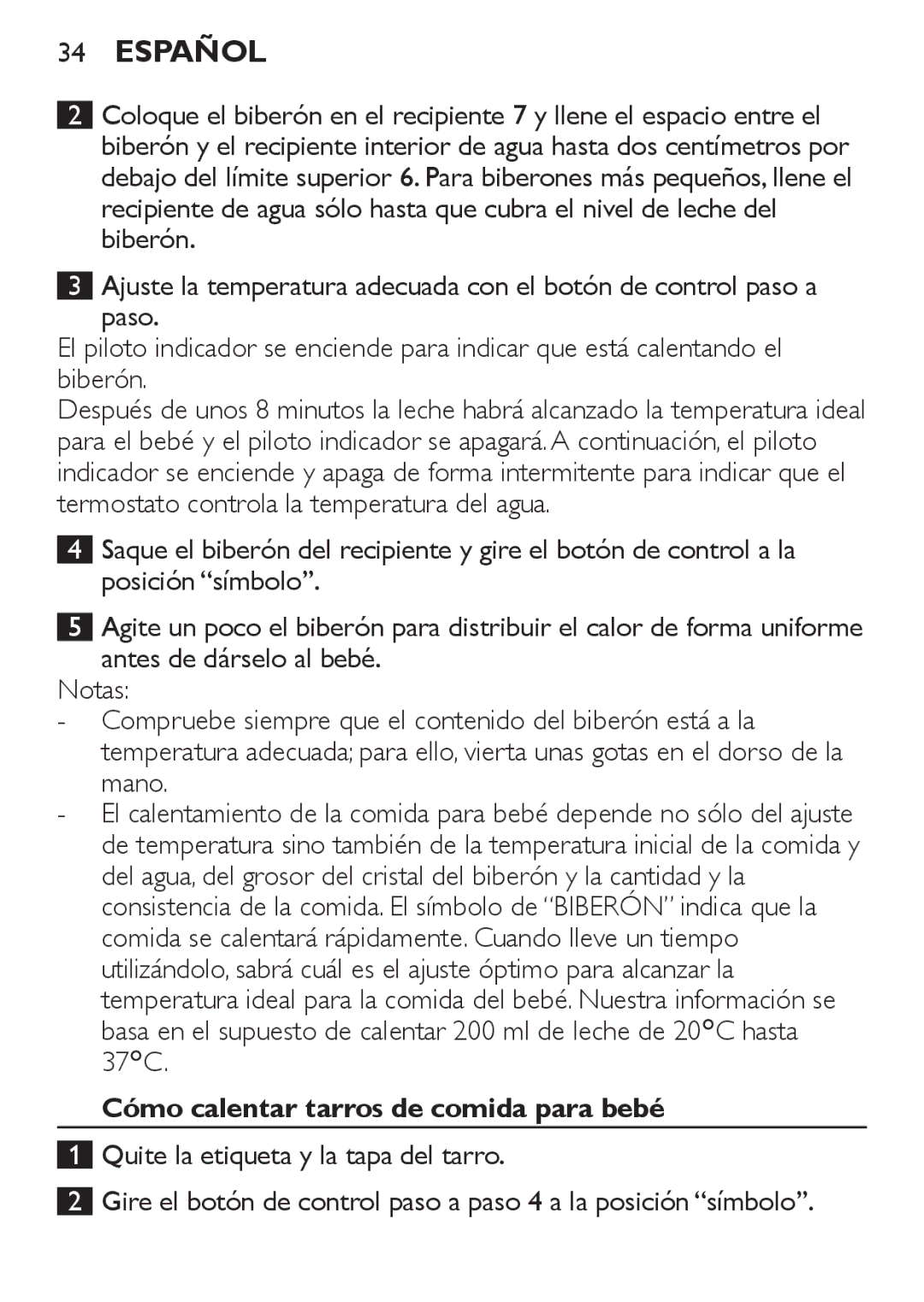SCF215 specifications
The Philips SCF215 is a remarkable product in the realm of baby feeding equipment, primarily recognized as a well-designed baby bottle. This bottle, designed with both functionality and safety in mind, meets the needs of modern parents and their infants, facilitating a smooth feeding experience.One of the standout features of the Philips SCF215 is its innovative Natural Response Teat. This teat is crafted to mimic the softness and feel of the breast, allowing for a more natural feeding transition for babies. The unique design enables babies to control the flow of milk by simply sucking, similar to how they would when breastfeeding. As a result, it encourages the development of healthy feeding habits and provides comfort for infants.
In terms of safety and health, the Philips SCF215 is made from BPA-free materials. This consideration is crucial for parents who are increasingly concerned about the substances that come into contact with their babies. The bottle is designed to be safe for heating, and its materials withstand frequent sterilization, ensuring hygiene at all times.
Another key characteristic of this baby bottle is its ergonomic design. The bottle’s shape allows for an easy grip, making it simple for both parents and their little ones to hold. The wide neck of the bottle ensures easy filling and cleaning, which is particularly beneficial for busy parents. Additionally, the design integrates a leak-proof cap that protects the teat from contamination when not in use.
The Philips SCF215 is compatible with other products in the Philips Avent range, providing versatility and convenience for parents who might seek a comprehensive feeding solution. The various teat flow options available also allow parents to customize the feeding experience according to their baby’s age and preferences.
Moreover, ease of use is paramount, and this bottle is dishwasher and microwave safe, making it convenient for daily routines. Cleaning becomes an effortless task, helping parents to focus more on spending quality time with their little ones rather than worrying about bottle maintenance.
In summary, the Philips SCF215 combines safety, functionality, and convenience, making it a popular choice among parents. Its thoughtful design and innovative features enable a seamless feeding experience that adapts to the evolving needs of infants, making it a staple in many households.

